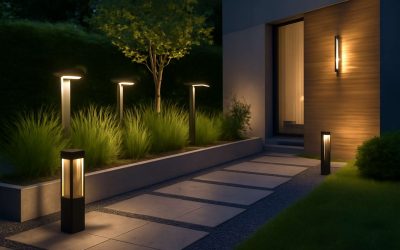
When it comes to replacing your light bulbs, you have many choices. Traditional incandescent bulbs, compact fluorescent lamps (CFLs), and LED bulbs are all popular replacement options. While LEDs have a higher upfront cost than other bulbs, they tend to pay for themselves in lower energy costs and long lifespans. In addition, some LED lights have the added benefit of emitting colors to create different lighting effects.
A quick look at the technology behind LEDs makes it easy to see why they are such a popular alternative to other types of bulbs. The basic LED device consists of two semiconductors that are connected to each other through an electrostatic charge. When an electric current runs through the semiconductors, they release photons in the visible light spectrum. This is what gives them their luminosity. Because of this, the color and intensity of an LED bulb depends on the type of semiconductor material used. The most common semiconductor for LEDs is aluminum gallium arsenide. However, other semiconductors such as indium phosphide and silicon carbide can also be used.
An advantage of LEDs is that they produce very little heat. This means they can run cooler and be safer to touch than incandescent or CFL bulbs. In addition, they do not contain mercury like some other types of bulbs, making them a better choice for homes with children and pets. LEDs also turn on instantly, eliminating the wait time that some other bulbs require to reach full brightness.
Because of their small size, LEDs offer unique opportunities to innovate light fixture form factors. Some LED bulbs are designed to physically resemble familiar light bulb forms, while others are built into fixtures that have no replaceable light source format at all. In addition to offering more design freedom, these designs are often easier to install in enclosed fixtures such as chandeliers and ceiling fans than standard light bulbs.
LEDs are also an excellent choice for areas where changing bulbs can be difficult or dangerous, such as high ceilings in homes or commercial buildings. They are also a good fit for outdoor lighting, as they are durable and resistant to shocks, vibrations, and other environmental factors that can damage conventional bulbs. Additionally, LEDs generate very little infrared or ultraviolet radiation, which can be helpful in illuminating sensitive objects or materials.
Another important factor to consider when choosing an LED bulb is its lumens and color rendering index (CRI). These are measures of the ability of a light to reproduce color accurately when compared to a standard reference, such as sunlight. LEDs typically have higher lumen counts and a higher CRI than incandescent bulbs. However, it is important to remember that not all LEDs are created equal and may appear noticeably different in color hue when comparing options from various manufacturers.
Finally, it is important to consider how much wattage an LED light will consume in order to ensure that it will be compatible with your existing fixture. The easiest way to do this is to look at the old bulb in your fixture; it should have a series of letters and numbers on the side that indicate its shape and size. For example, an A19 or PAR20 bulb has a diameter of 19/8 inches or 20/8 inches respectively.



0 Comments